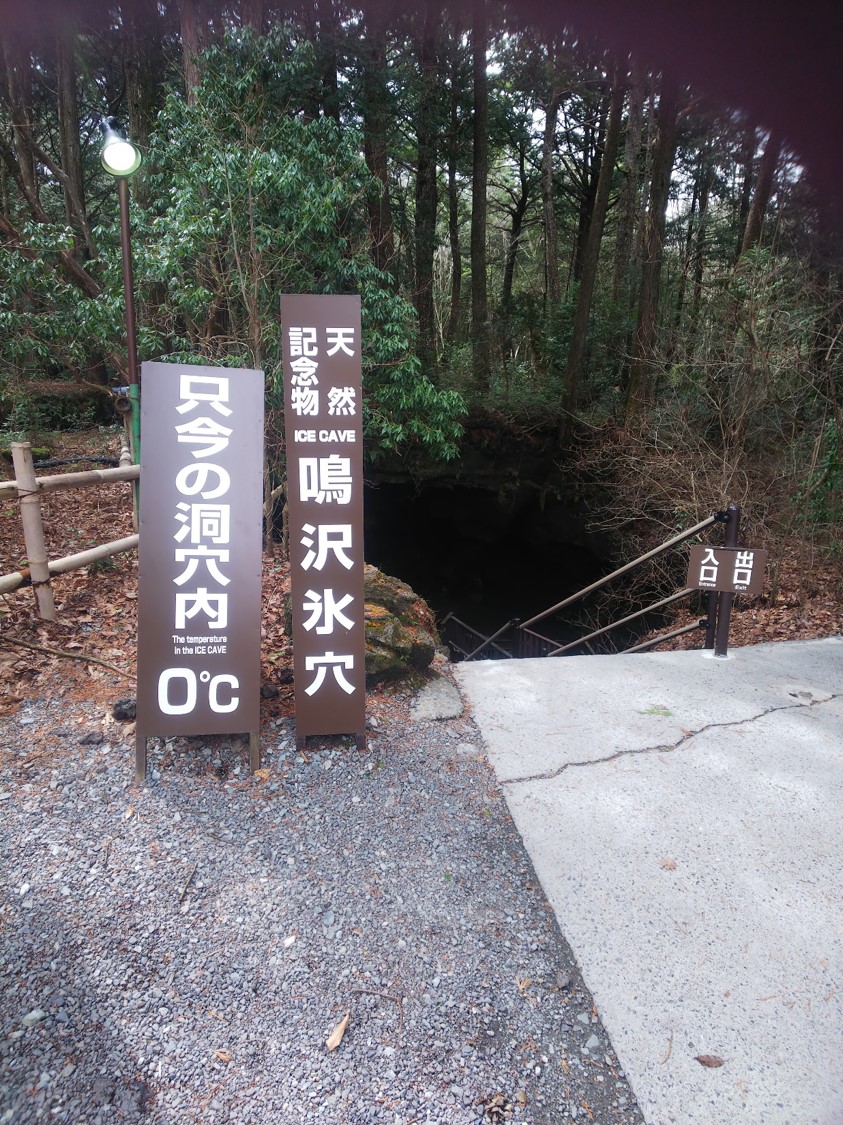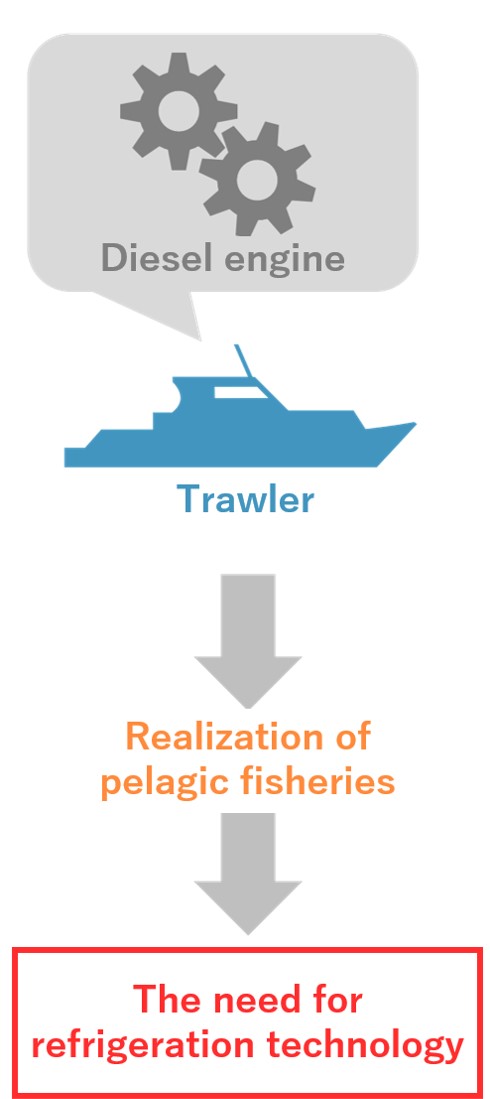The History of Japanese Refrigeration Technology
It All Started with Ice Harvesting
The Narusawa Ice Cave, which formed after the lava solidified at the foot of Mt. Fuji, is a natural freezing and refrigeration facility. It was in use from the late Meiji period to the war's end. It was utilized by the locals in their daily life for ice harvesting, silkworm egg storage, and agricultural storage.



Even now that it's not being used, the ice is still there, not melting. That's Amazing!
To Maintain the Freshness of Marine Products
Japan, which is surrounded by oceans, has had a thriving fishing industry from the old period. Till lately, keeping the freshness of marine items for extended periods of time was a major issue in Japan.

In the early Meiji period, Japanese trawlers were equipped with diesel engines, and a new form of fishing called pelagic fishing began. Pelagic fishing is mostly done in waters far away from one's own nation (within 200 nautical miles of other countries, in the high seas, etc.), and it takes a long time, from the time a fishing boat leaves the port to the time it returns, which can range from 50 days to over a year. As a result, freezing technology was required to send the caught fish to the port in a fresh form.
However, Meiji Japan's freezing technology remained far behind that of other countries. Scientific advancement in Europe and the United States had resulted in the discovery of rules and regulations that were important for freezing technology. While other countries improved their freezing technique one by one, Japan used ice to preserve the freshness of its marine products. Unfortunately, ice has natural limitations. It took a long time to solve this problem.
| 1911 | Odessen (Denmark) has developed a brine refrigerator for quick freezing. |
|---|---|
| 1919 | Ihei Kuzuhara builds a freezing plant in Hokkaido to freeze and process fish. In the same year, a domestic refrigerator is developed. |
| 1923 | Kanto factories have a brine freezer installed. Slow freezing technology is installed aboard Common Fishery's fishing vessels. |
| 1930 | Birds Eye (USA) develops a contact freezer. |
| 1933 | Contact freezers are introduced to Japanese fishing vessels. |
Thus, the freezing technique that sustains Japan's fishing sector was developed.
Freezing Technology That Is Familiar
After World War II, the demand for food increased due to the population growth caused by the first baby boom. In 1955, the country entered a period of rapid economic growth. Influenced by these social changes, the demand for frozen foods that can be preserved for an extended period of time rose. At the same time, the development of quality control for frozen foods was promoted.
Since the late 1950s, the foundation for the current frozen distribution system has been laid.
| 1959 | The Ministry of Health, Labor and Welfare (MHLW) promulgates a notice on the standard criteria for frozen foods, which embodies the Food Sanitation Law, requiring storage at -15℃ (5℃) or lower. |
|---|---|
| 1965 | The Natural Resources Council of the Science and Technology Agency will make a cold chain recommendation. |
| Late 1970s | A standard (Codex standard), which to set the distribution and storage temperature of frozen foods at -18℃ (-0.4℉) or lower, was established. |
During the development of the refrigeration distribution system, electric refrigerators and freezers for household use became popular in the 1960s and 1970s. Refrigeration technology has reached many homes.
Individual Quick Frozen (IQF) refrigerators that could freeze food in pieces were created in the 1980s. With the introduction of frozen fried rice and frozen pilaf, the usage of frozen foods as commercial meal components in the restaurant business grew dramatically. At the time, family restaurants and restaurant chains used a central kitchen system to save the time and effort necessary for meal preparation by processing and preparing materials for many locations in one location and transferring them to each store to serve food to customers faster. The foodservice business has actively embraced refrigeration technologies.
Subsequently, to meet the demand for food, freezing technology was also improved in the preservation and transportation of fish and shellfish.
- Creation of a method for freezing crustaceans by pouring water, which has proven challenging to maintain quality.
- National distribution achieved by quick freezing of huge fillets
- A method for avoiding browning of tuna meat through ultra-low temperature storage
- The discovery of a chemical that prevents fish and shellfish from freeze denaturation.
Thus, the distribution and quality of seafood in Japan were greatly improved by the 1980s. It can be said that the foundation of the freezing technology used today was completed during this period.
The history of freezing technology in Japan began with pelagic fishing in the early Meiji period (1868-1912) and developed greatly over the next 100 years. Even as the social environment changed after the war, freezing technology continued to evolve and became an indispensable part of our lives.